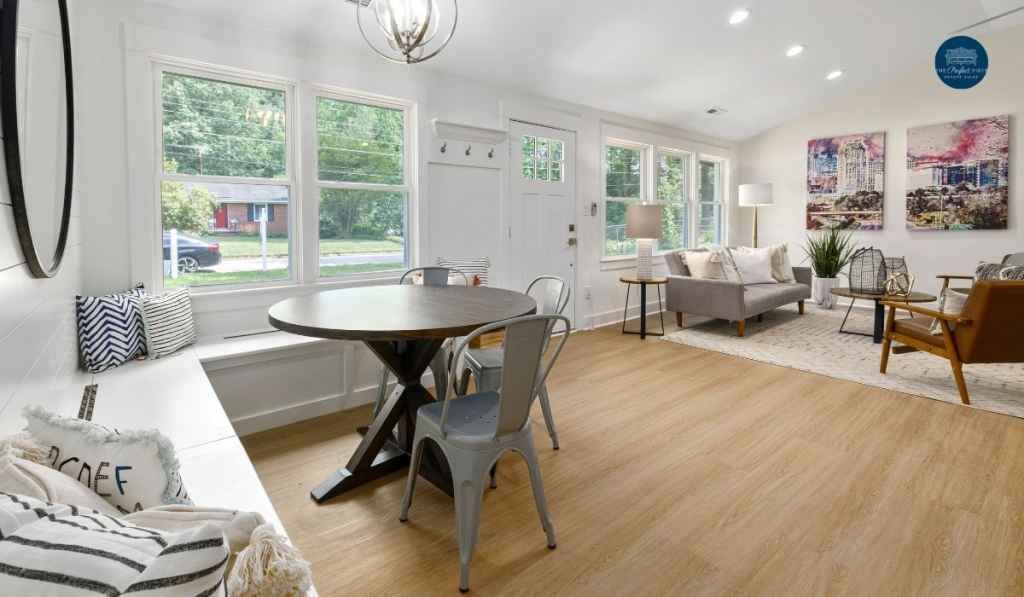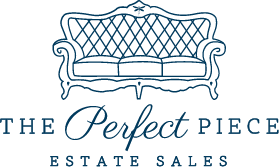10 Genius Home Organization Ideas for a Clutter-Free Space
Maintaining a clutter-free home can often feel like a daunting task, especially in today’s fast-paced world, where we accumulate possessions faster than we can organize them.
However, with a bit of creativity and strategic planning, achieving a well-organized living space is entirely within reach.
In this article, we’ll explore ten genius home organization ideas that can transform your dwelling into a serene oasis of orderliness and efficiency.
Declutter Regularly:
Decluttering regularly is essential for maintaining a clutter-free living space.
It’s easy for belongings to accumulate over time, leading to overcrowded closets, overflowing cabinets, and cluttered surfaces.
To combat this, it’s crucial to establish a routine for decluttering and purging unnecessary items.
Set aside dedicated time intervals, whether it’s weekly, monthly, or seasonally, to assess your belongings and identify items that no longer serve a purpose or bring joy.
The “one in, one out” rule is a simple yet effective strategy to prevent unnecessary accumulation of belongings.
For every new item you bring into your home, whether it’s a piece of clothing, a kitchen gadget, or a decorative item, commit to removing one similar item that you no longer use or need.
This rule helps to maintain balance and prevents your home from becoming overwhelmed with excess clutter.

Utilize Vertical Storage:
Utilizing vertical storage is an excellent way to make the most of your available space while keeping your belongings organized and easily accessible.
By taking advantage of vertical spaces, you can free up valuable floor space and create a more efficient and visually appealing storage solution.
One effective way to maximize vertical storage is by installing floating shelves.
These shelves are mounted directly onto the wall, providing a sturdy platform for displaying decorative items, books, or everyday essentials.
Floating shelves not only add functional storage but also contribute to the aesthetic appeal of your space, creating a modern and streamlined look.
Invest in Multifunctional Furniture:
Investing in multifunctional furniture is an intelligent strategy for maximizing space and functionality in your home, especially if you’re dealing with limited space constraints.
These versatile pieces serve dual purposes, offering both storage solutions and practical utility while also helping to reduce clutter and maintain a tidy living environment.
One example of multifunctional furniture is ottomans with hidden storage compartments.
These ottomans not only provide a comfortable place to sit but also offer valuable storage space inside.
You can use them to store extra blankets, pillows, magazines, or other small items, keeping them out of sight and minimizing visual clutter in your living room or bedroom.
Implement Drawer Dividers:
Implementing drawer dividers is a practical and effective way to keep your drawers organized and clutter-free in various areas of your home.
Whether in the kitchen, bedroom, or office, drawer dividers help categorize and separate items, making it easier to locate specific items and maintain order.
In the kitchen, drawer dividers are invaluable for organizing utensils such as spatulas, spoons, and whisks.
By creating separate compartments for different types of utensils, you can prevent them from becoming jumbled together and make it easier to find the utensils you need when cooking or preparing meals.
Label Everything:
Labeling everything in your home or workspace might seem like a small task, but its impact on organization and efficiency is profound.
By assigning clear labels to containers, bins, and shelves, you eliminate the frustration of searching for items and create a system where everything has its place.
Investing in a label maker is a wise choice for those who value precision and uniformity. With a label maker, you can easily create professional-looking labels with various fonts, sizes, and styles. Alternatively, adhesive labels offer a budget-friendly option without compromising on clarity and durability.
When labeling, be specific and descriptive. Instead of simply writing “miscellaneous,” specify the contents of each container or shelf. For example, label a bin “Winter Accessories” or a shelf “Office Supplies – Pens and Markers.” This level of detail saves time and minimizes guesswork when retrieving items.
Create Zones:
Creating designated zones within your living space is a strategic approach to optimizing organization and functionality. By dividing your area into distinct areas based on activities, you can streamline your daily routines and maintain a clutter-free environment.
Start by identifying your space’s primary functions, such as cooking, dining, working, and relaxing. Each activity deserves its own designated zone, complete with appropriate furnishings and storage solutions tailored to its specific purpose.
Utilize Underutilized Spaces:
Maximizing storage in your home involves thinking creatively about underutilized spaces.
Areas such as the space under the stairs, above cabinets, or behind doors often go unused but can be transformed into valuable storage opportunities with a bit of ingenuity.
The area under the stairs, for example, can be transformed into a functional storage nook.
Install custom-built shelves or drawers to accommodate shoes, seasonal items, or household essentials.
Consider adding a built-in bench with storage underneath for a multifunctional solution that maximizes space efficiency.
Similarly, the space above cabinets in kitchens or bathrooms is often overlooked but can provide valuable storage space for items that are not frequently used.
Install floating shelves or decorative baskets to store extra kitchenware, linens, or decorative accents.
This approach not only adds practical storage but also enhances the visual appeal of the room.
Implement a Paper Management System:
Controlling paper clutter is essential for maintaining an organized and functional home or workspace.
Implementing a paper management system can help you keep track of incoming documents, reduce clutter, and ensure important information is easily accessible when needed.
Start by establishing a routine for sorting incoming mail promptly.
Designate a specific area, such as a mail organizer or basket, for incoming mail and make it a habit to sort through it regularly.
Immediately discard junk mail or unwanted advertisements to prevent them from piling up.
Digitizing important documents is another effective way to manage paper clutter.
Invest in a scanner or use smartphone apps to create digital copies of documents such as receipts, bills, and contracts.
Store these digital files on your computer or in cloud storage for easy access and organization.

Rotate Seasonal Items:
Maximize storage space by rotating seasonal items such as clothing, decorations, and outdoor gear.
Store off-season items in labeled bins or vacuum-sealed bags to free up space for current necessities.
This rotation system ensures that only relevant items are accessible, reducing visual clutter.
Adopt a Minimalist Mindset:
Embrace a minimalist mindset by prioritizing quality over quantity and being intentional about the possessions you bring into your home.
Regularly reassess your belongings and let go of items that no longer serve a purpose or bring joy.
By decluttering and simplifying your surroundings, you’ll create a harmonious living space conducive to peace and productivity.
Conclusion
By implementing a paper management system that includes sorting incoming mail, digitizing documents, establishing a filing system, and investing in a shredder, you can effectively control paper clutter and maintain a tidy living or workspace.
Consistency and diligence are essential to successfully managing paper clutter and enjoying the benefits of an organized environment.
Ready to take control of your paper clutter?
Contact us today at The Perfect Piece Atlanta for expert organization solutions and decluttering services!
FAQs
Why is decluttering regularly necessary?
Decluttering regularly is crucial for maintaining a clutter-free living space because it prevents belongings from accumulating over time, leading to overcrowded closets, cabinets, and surfaces. By establishing a routine for decluttering, you can effectively assess your possessions and remove items that no longer serve a purpose or bring joy.
What is the “one in, one out” rule, and how does it help with organization?
The “one in, one out” rule involves removing one item for every new item you bring into your home. This rule helps maintain balance and prevents excess clutter by ensuring that your belongings do not accumulate faster than you can organize them.
How can vertical storage solutions help maximize space in a home?
Vertical storage solutions, such as floating shelves, effectively utilize wall space, freeing up valuable floor space. By installing shelves vertically, you can create additional storage areas for displaying items while maintaining a visually appealing and organized environment.
What are some examples of multifunctional furniture, and how do they contribute to home organization?
Multifunctional furniture, such as ottomans with hidden storage compartments, serves dual purposes by providing both seating and storage solutions. These versatile pieces help maximize space and reduce clutter in various areas of the home.
How do drawer dividers aid in organization, and where are they most useful?
Drawer dividers help categorize and separate items within drawers, making it easier to locate specific items and maintain order. They are instrumental in organizing utensils, clothing, and stationery in areas such as the kitchen, bedroom, and office.
Why is labeling important in home organization, and what tools can be used for labeling?
Labeling helps create a systematic approach to organization by clearly identifying the contents of containers, bins, and shelves. Label makers or adhesive labels can be used to create professional-looking labels with various fonts, sizes, and styles, ensuring clarity and consistency in labeling.
What is the benefit of creating designated zones within a living space?
Creating designated zones based on activities helps streamline daily routines and maintain a clutter-free environment by ensuring that each area is tailored to its specific purpose. This approach optimizes organization and functionality throughout the home.
How can underutilized spaces be transformed into storage opportunities?
Underutilized spaces, such as the area under stairs or above cabinets, can be transformed into valuable storage opportunities with custom-built shelves, drawers, or floating shelves. By maximizing these spaces, you can effectively increase storage capacity and reduce clutter.
The post 10 Genius Home Organization Ideas for a Clutter-Free Space appeared first on Perfect Piece.











